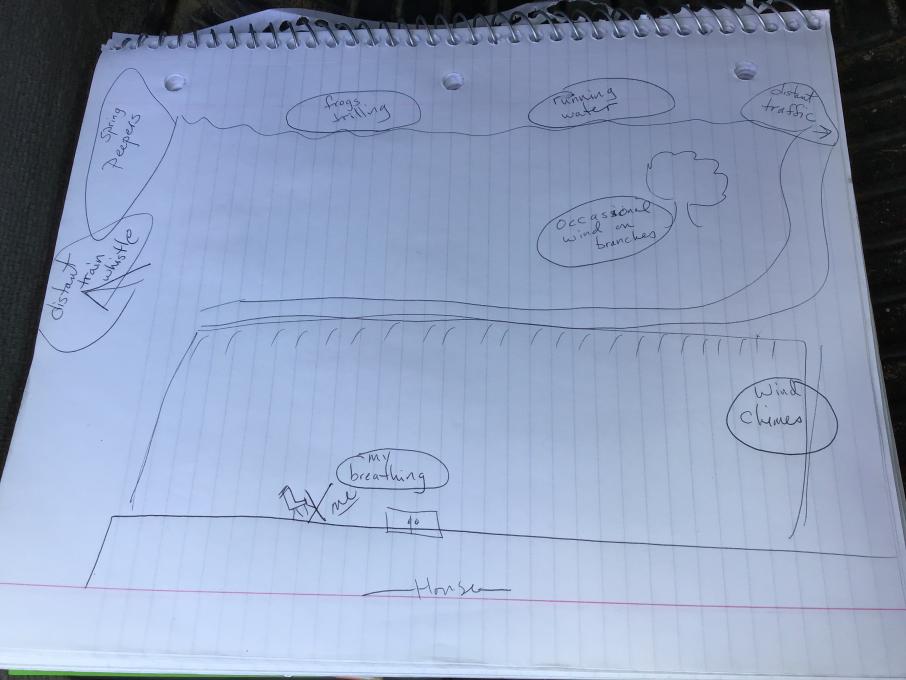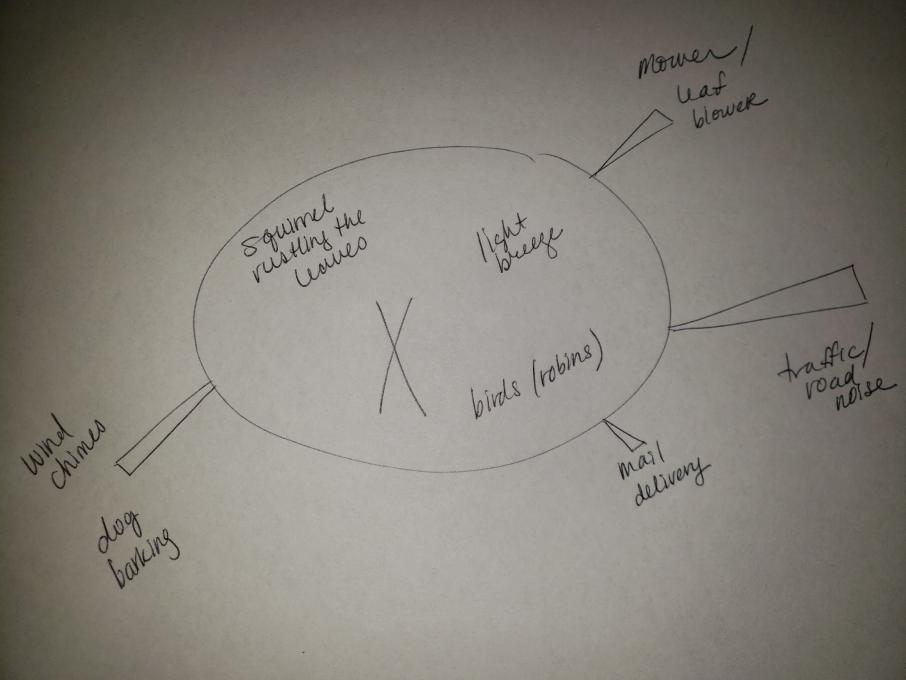The Cornell Lab Bird Academy › Discussion Groups › Inspiring Investigations through Citizen Science › Encouraging Observations
-
I was surprised to find that the more I listened the more I heard- seems simple, but there were some very loud frogs that dominated the soundscape and when I tried to listen past them I was amazed at the variety of other sounds. When working with young students, I have often led activities that start with listening and observing. I love how some children are amazed ( like I was!) once they are able to tune out traffic or an occasional lawnmower at our gardens. Another way to encourage young children to observe nature, is to offer a treasure hunt that not only has objects to look for but also sounds and textures. Sometimes offering this extra bit of direction is helpful.

-
The most impactful thing about my sound map was how much I actually tune out on a daily basis when I go outside! I've done an activity similar to this but left out the taste sense because I didn't want students eating dirt. When doing the activity however, I found that is was important to really spread out, and close your eyes when doing the listening part. After 10 minutes of listening, I then let students open their eyes so they could touch, feel, and smell certain things. Just going outside away from "screen time" is important to having students realize that they are part of the world in which they live.

-
A break from screen time & into nature is so important these days! While on one hand, it's great that kids have access to so much information about their natural world at their fingertips, it's also easy to get lost in the "digital" nature, so they see, and hear and read about our environment but don't experience it first hand. Even in a very urban or very rural environment, there is something to hear, it can be done anywhere , anytime, any season really.
-
Read More:

